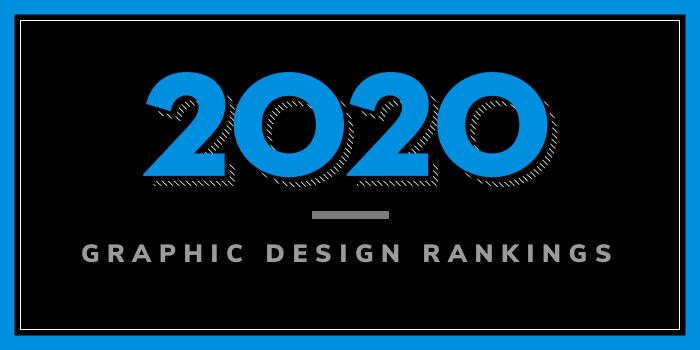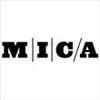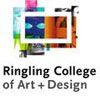
What are the top graphic design BFA programs for 2020?
| Ranking | School | State |
|---|---|---|
| 1 | Rhode Island School of Design | Rhode Island |
| 2 | Pratt Institute | New York |
| 3 | Maryland Institute College of Art | Maryland |
| 4 | The New School’s Parsons School of Design | New York |
| 5 | School of Visual Arts | New York |
| 6 | ArtCenter College of Design | California |
| 7 | School of the Art Institute of Chicago | Illinois |
| 8 | Savannah College of Art and Design | Georgia |
| 9 | California College of the Arts | California |
| 10 | California Institute of the Arts | California |
| 11 | Otis College of Art and Design | California |
| 12 | Ringling College of Art and Design | Florida |
| 13 | Virginia Commonwealth University | Virginia |
| 14 | Cooper Union | New York |
| 15 | Portland State University | Oregon |
| 16 | Minneapolis College of Art and Design | Minnesota |
| 17 | Columbia College Chicago | Illinois |
| 18 | University of North Texas | Texas |
| 19 | University of Texas at Austin | Texas |
| 20 | Massachusetts College of Art and Design | Massachusetts |
| 21 | University of Illinois at Urbana – Champaign | Illinois |
| 22 | University of Georgia | Georgia |
| 23 | Texas State University | Texas |
| 24 | Washington University in St. Louis | Missouri |
| 25 | University of Southern California | California |
Below are the Top 25 Graphic Design schools and colleges in the US offering Bachelor of Fine Arts (BFA) degree programs for 2020. For an explanation of ranking criteria, click here.

Founded in 1877, Rhode Island School of Design (RISD) is one of the first art and design schools in the U.S. Serving approximately 2,500 students from across the U.S. and 57 other countries, the school has 19 studio majors and leading to bachelor’s or master’s degrees in the Fine Arts, Architecture, Design or Art Education. The school’s most popular programs are Graphic Design, Film/Animation/Video (FAV), Illustration, Painting, and Industrial Design.
One of the largest departments at RISD, the school says Graphic Design offers “countless opportunities to collaborate within and beyond the discipline,” thanks to access to more than 160 undergraduate majors. Course highlights for the BFA program include Spatial Dynamics, Color + Surface, and Design Studio. The program culminates in a “challenging, self-defined degree project that taps into each student's strengths, interests and experiences,” says the school.
An impressive 96% of all RISD graphic design graduates are employed one year after graduation, and 70% are employed in positions directly related to their major.

Founded in 1887, Pratt Institute serves more than 4,800 students enrolled in more than 25 undergraduate degree programs and concentrations and more than 26 graduate degree programs in its Schools of Art, Design, Architecture, Liberal Arts and Sciences, and Information. Founded in 2014, The School of Design offers “up to four of Pratt’s oldest and most esteemed disciplines,” says the school, including Communications Design, Fashion Design, Industrial Design, and Interior Design.
The Communications Design program is the “only program in the country that recognizes and embodies the convergence and integration of Illustration, Advertising, and Graphic Design as the primary forces for the visual expression of ideas.” Students may concentrate in any of three areas (Illustration, Advertising Art Direction or Graphic Design). The undergraduate program for aspiring graphic designers leads to a BFA in Communications Design with a Graphic Design Emphasis.
Students in the program have the opportunity to enroll in one of more than 20 study abroad programs and international exchange programs in over a dozen locations such as Florence, Milan, Copenhagen, London, and Tokyo.
Graduates are prepared to enter careers in print and digital media, typography, identity systems and branding, design strategy, social media and interaction design, motion design, environmental design, data visualization, information design, and user experience design.

Founded in 1826, Maryland Institute College of Art (MICA) is the oldest independent, continuously degree-granting college of art and design in the U.S. The College enrolls nearly 3,500 undergraduate, graduate and open studies students from 49 states and 52 countries. Around 80 programs leading to the BFA, MA, MFA, and MPS degrees are available in the areas of fine arts, design, electronic media, art education, liberal arts, and professional studies. Post-baccalaureate certificate programs are also offered.
MICA says that it “sees graphic design as a comprehensive activity of visual problem solving for professional leaders working in branding, UI/UX, packaging, spatial design, publication design, and typeface design, among others.” The school offers a BFA in Graphic Design with three Concentrations: Graphic Design Studio, Book Arts Studio, and Graphic Design + Humanistic Studies. The curriculum for this 120 credit hour program consists of a three-year sequence of core design courses. Course highlights include Art Matters, Frameworks: Themes in Humanistic Studies, Color/Design/Process, Body/World/Machine, Haptics and Optics, Cartographies, PhotoImaging, and Flexible Design Studio. Senior Seminar (worth three credits) and internship opportunities are also part of the program.
Graduates of the Graphic Design BFA at MICA “bring the ability to think” and “thrive as professional designers.”

The New School was founded in 1896 by American Impressionist William Merritt Chase. Back then, the school was known as The Chase School, and later as New York School of Fine and Applied Art. Today, known as The New School's Parsons School of Design, this art and design college serves nearly 6,000 students enrolled in 130 degree and diploma programs across five schools including the School of Art and Design History and Theory, School of Art, Media and Technology, School of Constructed Environments, School of Design Strategies, and the School of Fashion.
The School of Art, Media, and Technology offers a BFA in Communication Design that begins with “an intense focus on typography and interaction,” says the school. A related program, the BFA in Art, Media, and Technology, is offered at the Parsons Paris campus. Students in the Communication Design program go on to complete courses, internships, and sponsored projects in editorial design, interaction design, branding, web/mobile product design, type design, motion graphics, advertising design, and information design.
In hands-on, collaborative courses, students work directly with peers throughout the university, including students in programs housed at other schools within The New School, and with external partners. Electives on topics such as environmental graphics, design for social engagement, business, and media studies enhance learning. And art and design history and theory courses “contextualize” work while students “develop research, writing, and critical reasoning skills.” Parsons’ resources, including labs, libraries, galleries, and research institutes, support students’ ideas and projects.
Graduates pursue careers in advertising, branding, exhibition/retail design, and environmental graphics, information visualization, interaction design, publication design, and motion graphics.

Founded in 1947 as “Cartoonists and Illustrators School,” School of Visual Arts (SVA) serves more than 3,700 students enrolled in over 30 programs in areas ranging from fine arts and graphic design to filmmaking and photography. The programs at SVA lead to the BFA, MFA, MA, MAT or MPS degree.
The BFA in Design is a “multidisciplinary educational system in itself, offering separate majors that include Graphic Design, Motion Graphics and 3D Design,” says the school. The program can be divided into package design, editorial design, information graphics, corporate identity, publication design, CD packaging, book jacket design, environmental design and website design. Other program highlights include intensive one-week workshops, exhibitions that are routinely covered by NBC, CBS. ABC, and CNN, competitions, enrollment in the AIGA (American Institute of Graphic Artists) and the Art Directors Club—two of the most prestigious design organizations in the country, industry review, and internships.
Graduates of the program have gone on to work for commercial and not-for-profit corporations, institutions, and businesses. Many have founded their own start-ups, design firms and studios. Some have become partners in businesses and individual projects. Graduates have started over 50 design studios around the globe.

Founded in 1930, ArtCenter College of Design serves approximately 2,250 students representing more than 40 countries. The school offers 11 undergraduate and seven graduate degree programs in a variety of Industrial Design, Visual, and Applied Arts Disciplines. A joint MS/MBA program with the Drucker-Ito School of Management is also available. The school, which has a campus in Berlin, two campuses in Pasadena, and satellite studios in Los Angeles at the Peterson Automotive Museum, offers a BFA in Graphic Design.
The school says that students in the program “develop sophisticated typographic and image-making skill sets working across both emerging and traditional media—everything from letterpress to data visualization and packaging to spatial experiences—to create emotionally resonant messages.” Course highlights for the program include Type 1: Letterforms, Design 1: Materials Lab, Narrative Sketching, Narrative Imagine, Art of Research, Package Design, Visual Interaction Design, Editorial Print, Mediatecture, Transdisciplinary Studio, and Advanced VxD Studio 8.
Students are also required to complete courses such as Business & Professional Practice, Science & Technology, and Social Sciences. Portfolio & Career Preparation are also part of the program.
Graduates of the BFA in Graphic Design at ArtCenter College of Design hold positions such as Creative Director of Special Projects, Nike; Visual Strategist, NASA; Partner and Creative Director, Gee + Chung Design; Founder and CEO, Blind, and Chief Creative Officer, Frog Design.

Founded in 1866, the School of the Art Institute of Chicago (SAIC) is one of the oldest accredited independent schools of art and design in the country. Serving nearly 3,700 students from 78 countries, SAIC offers more than 50 areas of study from Animation and Costume Design to Visual Communication Design and Writing. The Visual Communication Design Department offers a BFA program with two major areas of focus: Physical Media (print, objects, and environments) and Virtual Media (interactive and time-based media).
Course offerings include both physical and virtual design areas such as artists' books design, environmental graphics, exhibition design, font/typography design, information design, interaction design/interface design, identity design/strategic design, illustration/imagery design, letterpress printing and bookbinding, motion graphics design, offset printing/digital printing, packaging design, poster design, publication design, sustainable design, symbol design, and website design/cross-platform design.
Other program highlights include an active AIGA (American Institute of Graphic Arts) student chapter, Exploratory Languages (a lecture series featuring leading designers and design educators from across the country), and CIPB (Chicago International Poster Biennial), which is an international competition representing leading designers from throughout the world. Internship and optional study abroad opportunities are also available.

Savannah College of Art and Design (SCAD) was founded in 1978. With campuses in Savannah, Atlanta, Hong Kong, and Lacoste, France, the school serves more than 14,000 students from all 50 states and more than 100 countries. Offering more art degree programs and specializations than any other art and design university, SCAD has plenty of opportunities to study at domestic and international locations. The school also offers more graphic design programs than just about any other school on our list. Options include BA, BFA, MA, and MFA degrees in Graphic Design and a Design Management MA. A Minor in Graphic Design is also available.
All programs highlight Product Packaging, Entrepreneurship, Mobile Technology, Interface Design and User Experience. Students have the opportunity to declare a double major in the areas of Advertising, Branded Entertainment, Illustration, Motion Media Design, Sequential Art and more. They also have access to Minors such as Mobile and Interactive Design, and Advertising Copywriting. Students may complement their degree with a Certificate in Digital Publishing.
The BFA is offered in Atlanta, Hong Kong, Savannah, and online. The Certificate program is offered in Atlanta, Savannah, and online.
SCAD graduates are prepared to join elite agencies, multinational companies, or start their own businesses as they lead branding, visual marketing, interactive media, and immersive campaigns. Graduates work at top companies around the globe including Apple, IBM, Ralph Lauren, Under Armour, Verizon, and many others.

Founded in 1907, California College of the Arts (CCA) serves around 1,900 students enrolled more than 30 degree programs. The BFA in Graphic Design offers the opportunity to immerse in the areas of Brand Identity, Print, Motion Graphics, and Screen-Based and Interactive Design. The school says elective offerings “strengthen” students “design toolkit,” while CCA’s “extensive” internship program provides the opportunity to gain real-world experience. CCA students intern for design firms, publishing houses, and nonprofits as they work toward a polished thesis project.
“Situated within a top art college,” says the school, “the Graphic Design program also benefits from an atmosphere of hands-on making and experimentation. Students are constantly giving and getting feedback and testing their ideas with faculty, visiting experts, and peers.”
Graduates of the Graphic Design BFA Program at CCA have landed positions at innovative design firms, museums, publishing houses, technology companies, nonprofits, and more.

Walt and Roy Disney formed California Institute of the Arts (CalArts) in 1961 through the merger of two existing Los Angeles schools for art and music. The school became the nation's first postsecondary institution to offer graduate and undergraduate degrees in both the visual and performing arts. Just shy of a decade later, the new college, CalArts, opened its doors to offer programs in art, design, film, music, theater and dance.
Today, the school serves around 1,500 students enrolled in more than 70 undergraduate, graduate, and doctoral programs across six schools including the School of Critical Studies, The Sharon Disney Lund School of Dance, the School of Art, the School of Film/Video, The Herb Alpert School of Music at CalArts, and the School of Theater. The School of Art houses the undergraduate Graphic Design Program, which leads to a BFA.
The BFA program is a full-time, four-year program that prepares students for a career in print and publication design, web and interface design, motion graphics for broadcast and film, branding, identity and type design, and design history and education. Each year in the program “builds on the experience of the previous as a sequence of additional classes explore image-making, typography and design history. Baseline coursework is followed by more specialized classes in areas such as web design, motion graphics, and type design.”
In addition to core studio classes, all BFA candidates are required to pass a Graduation Portfolio Review in order to complete the program and obtain the BFA degree.

Otis College of Art and Design (OTIS) was established in 1918 by founder and publisher of the Los Angeles Times, General Harrison Gray Otis. The school serves approximately 1,100 full-time students enrolled in 11 BFA degree programs ranging from Graphic Design to Toy Design. The school also offers MFA degrees in Fine Arts, Graphic Design, Public Practice, and Writing, as well as a variety of minors and certificate programs.
The BFA in Graphic Design is offered through the Communication Arts Department as well as a Minor in Advertising Design and a Graphic Design Certificate. Formats covered in the BFA Graphic Design Program include branding and logo development, posters, books, package design, apps, websites, and interactive design. Students in the program “learn to articulate a critical and theoretical perspective and develop graphic design skills, such as type design and traditional letterpress,” says the school. “Strong craft and presentation skills are emphasized throughout,” with students achieving “the highest level of design excellence through critiques, reviews, and workshops.”
Course highlights for the program include Drawing and Building Form, Connections through Color and Design, History of Graphic Design, Illustration, and Advertising Design, Publication, Advanced Image Making Projects, Systems and Identity Design, and Type and Alternative Media. A Senior Thesis/Research Paper, Senior Project/Seminar, and Capstone are also part of the program.
Graduates of the Graphic Design programs at OTIS have landed positions at major companies such as Apple, Anthropologie, LACMA, Guess, Metro, Capitol Records, and others.

Ringling College of Art and Design (RCAD) was established in 1931 by circus baron, art collector, and real estate developer John Ringling. A member of the only global association to serve art and design education research (Cumulus), RCAD opened with just 75 students and 111 course offerings. Today, the school serves more than 1,600 students enrolled in 13 BA and BFA degree programs and nine minors. Graphic Design, Computer Animation, Film, Game Art, Illustration, and Virtual Reality Development are just a few options.
RCAD programs offer a rigorous curriculum, which combines studio and liberal arts, with client projects, substantive internships, and national competitions. The school’s BFA in Graphic Design prepares students to design “show-stopping solutions for print and interactive media,” says RCAD. Launched in 1980, the program allows students to collaborate with other artists such as copywriters, printers, photographers, illustrators, and developers to “make their ideas a reality.” Course highlights include Design & Typography, New Media Design, Contemporary Design Culture, Interactive Design, Drawing & 2D Design, Drawing & 3D Design, and Visual Persuasion. For Course GDES 491, students have three options: Design Center, an Internship, or Graphic Design Elective.
RCAD internships have led to many full-time employment opportunities. Graduates have been hired by companies such as Google, Facebook, Adult Swim, CBS Interactive, ESPN, Apple iTunes, Leo Burnett, Microsoft, Yahoo!, American Greetings, IGN Entertainment, Wieden + Kennedy, Walt Disney Company, Birchbox, Inc. and many others.

Virginia Commonwealth University (VCU) was established in 1838. The school serves more than 31,000 students enrolled in 225 academic programs across 13 schools and one college. An additional four programs are offered at VCU’s Qatar campus. The School of the Arts (VCUarts), which serves more than 3,000 students, offers 25 degree programs. The Department of Graphic Design here offers BFA degrees in Graphic Design and Communication Arts.
The 122-credit BFA in Graphic Design is designed to “educate students to be capable of integrating form and information for the purposes of effective visual communication.” Course highlights for the program include Design Technology, Design Methods and Processes, Imaging, Letterpress, Book Arts, Visual Narrative, Studio Management, and Interaction. Seminar courses are also part of the program.
The Communication Arts BFA is a flexible degree program that allows students to study Advanced Figure Drawing, Scientific Illustration, 3D Modeling, Sequential Imaging (such as comic books and storyboards), Concept Design and Entertainment Design (such as video games and visual effects). “The program is centered on a rigorous investigation of studio methods and practices which explore conceptual and theoretical concerns for understanding and creating image, media, content and context.”
The focus during the junior and senior years is typography, visual studies design, figure drawing, introduction to 3D modeling, the history of visual communications, digital drawing, concept drawing, sequential imaging, advanced illustration, and advanced 3D modeling. The senior year culminates with the capstone portfolio course and a variety of electives are offered each semester to provide students the opportunity for specialized study.
Both BFA options prepare students to create effective visual communications for the advertising industry, marketing, business, retail, entertainment, public relations, publishing and more.

The Cooper Union for the Advancement of Science and Art (Cooper Union or CU) was founded in 1859 by inventor, industrialist and philanthropist Peter Cooper. The school offers programs in the areas of Art, Architecture and Engineering, and courses in the Humanities and Social Sciences. With nearly 900 students enrolled, the school’s art students account for 32% of the student population.
The School of Art at Cooper Union offers a flexible BFA in Art with a Specialization in Graphic Design. Students in the program may take elective studio classes and seminars, offered on a rotating basis, they may choose to focus their work in one or more areas of specialization, and they may enroll in advanced studio classes with the same course number multiple times. The school says that students are also “encouraged to follow an integrated approach by selecting from various areas while observing a prerequisite system designed to allow in-depth study in specific disciplines.” Other program highlights include internship and study abroad opportunities.

Portland State University (PSU) opened its doors in the summer of 1946 to just 220 students. Today, the school spans 50 city blocks, and it houses nine colleges and schools, 226 degree programs, and more than 25,000 students. The College of the Arts is home to the schools of Architecture, Art + Design, Music, and Theater + Film.
With around 1,400 students enrolled, the School of Art + Design offers BA, BS, BFA degrees and Minors in areas from Art History to Graphic Design. The Graphic Design Program has two options: the BFA and an eight-course Minor that includes Digital Design, Digital Imaging and Illustration, and Communication Design Systems, to name a few.
The BFA provides “a comprehensive education in design principles, applications, theories, history, and practice,” says the school. “The curriculum places particular emphasis on craft, concept, and research skills, as well as the development of effective design processes, the generation of meaningful narratives and story-telling techniques, and engagement with various community partners.” Students in the program work with faculty primarily through studio courses that introduce an increasing complexity of design problems and methodologies, combined with opportunities for independent development and interaction with professionals.
The first two years of the program culminate with a required Sophomore Portfolio Review, occurring once each year at the end of the Spring term. Only after successfully passing the Review are graphic design majors allowed to continue progression through the program. First and second year course highlights include Type & Communication Design, Digital Image and Illustration, Interactive Media, Communication Design Systems, and Contemporary Design Projects. During the third and fourth years of the program students “choose courses of increasing specialization, have opportunities for engaging in professional internships, and work to develop a professional portfolio as the culmination of their design studies.”
Summer Study Abroad experiences such as Printmaking and Mixed Media in Guanajuato, Mexico, Art History in Rome, and Berlin: The Fall and Rise of an Art City, are also part of the program.

Minneapolis College of Art and Design (MCAD) was established in 1886. The school, which shares a block with the Minneapolis Institute of Art, serves more than 800 students from 45 states and 15 countries. Of these, 50% are enrolled in Design, 38% in Media Arts, 10% in Fine Arts, and the remaining 2% in MCAD's new Arts Entrepreneurship Department. More than 20 programs are available across several departments, including a BFA in Graphic Design.
Students in the 120 credit hour BFA program “will develop their own voice and produce original work, they will research, engage with, and create innovative concepts, content, and form, and learn to communicate ideas visually,” says the school. Students will also “refine their technical and conceptual design skills in preparation for a professional career in graphic design.”
Students learn through courses, critiques, student activities, and more. Course highlights include Graphic Design, Publication Design, Digital Production, Web and Screen, Coding Concepts, Type Plus, and Ideation and Process. Advanced Graphic Design Seminar, Professional Practice and an internship are also part of the program.
Students in the BFA program have the unique opportunity to study abroad as well, in places such as Italy, Japan, Ireland, England or Germany, or elsewhere in the U.S.

Established in 1890, Columbia College serves more than 7,300 students from nearly every state and more than 60 countries. The school has over 100 academic majors or programs across several schools and more than 20 departments. Schools include the School of Media Arts, the School of Fine and Performing Arts, and the School of Liberal Arts and Sciences. The School of Fine and Performing Arts offers a BFA in Graphic Design.
In this program, students will “develop advanced skills in typography, layout, information design, packaging design, and other applications through hands-on courses,” says the school Students will learn the software and technology needed to “deliver dynamic visual communications,” and gain experience in research and client management.
Students in the BFA degree track do not choose a concentration and will take advanced courses across disciplines including Web Design, Publication Design, and Visual Identity. Course highlights include Photo Communication, Design Thinking, Publication Design, Experimental Typography, Visual Identity and Narrative, Letterpress Studio, Website Design, Graphic Design: Branded Environments, and Business of Design.
Students will complete a Design Portfolio and they have the opportunity to intern at firms such as Leo Burnett—one of the largest advertising agencies in the world, and with clients such as Procter & Gamble, and Foote, Cone & Belding—a global advertising agency with clients around the world. Students have also interned at Pivot Design-an award-winning branding, marketing, and advertising agency, Pressley Johnson Design—one of the premiere design communications firms in the Midwest, and 50,000feet,Inc.—a firm that has worked with some of America’s top brands. Graduates of the BFA program are often hired by these and many other firms.

University of North Texas (UNT) was founded in 1890 as Texas Normal College and Teachers’ Training Institute. With around 39,200 students enrolled, UNT is the fourth-largest university in Texas. The school offers 105 bachelors, 88 masters and 37 doctoral degree programs across 12 colleges and one school. The College of Visual Arts and Design is home to the Design Department, which houses the Communication Design Program.
The BFA in Communication Design covers the basic principles of design, image making, color theory and typography. It is also designed to “help students learn to be effective conceptual thinkers and, most importantly, creative problem solvers in the disciplines of Advertising and of Graphic Design,” says the school. Students in the program have the opportunity to complete an internship, study abroad, and access “valuable resources” consisting of over 1,000 reference books, magazines and paper/print samples of photography, illustration, typography, graphic design and advertising.
Graduates go on to careers in Graphic Design, Advertising, Marketing, User Experience Design, and many others.

The University of Texas at Austin (UT Austin) was founded in 1881. The school opened its doors in 1883 with one building, eight professors, one proctor, and 221 students. Today, UT Austin is home to nearly 52,000 students enrolled in over 500 degree programs and fields of study across 18 colleges and schools. The College of Fine Arts, School of Design and Creative Technologies offers a BFA in Design.
Students in the program develop research, problem-solving and critical thinking/making skills through studio-based courses. Elective courses and the university’s core curriculum emphasize the liberal arts. In their junior year, students must complete at least one professional internship, which may include working at major companies with offices in the Austin area. Just a few include Google, Dell, IBM, Apple, Samsung, Frog, Pentagram, and EA Games.
The BFA is a pre-professional degree program encompassing typography, image creation/manipulation, interaction design and 3-D design that is intended to prepare students for employment in the field of design. During the senior year, BFA Design students undertake a capstone design project and show their work in a public exhibition at the Visual Arts Center.

Massachusetts College of Art and Design (MassArt) was founded in 1873 as a training institution for aspiring drawing teachers, architects, artists, and designers. Today, the school offers more than 20 undergraduate art programs, nearly a dozen graduate programs, and around seven certificate programs to a population of nearly 2,100 students.
In the Communication Design BFA Program, students “gain a robust working knowledge of print design, information design, branding, and dynamic media (user experience design),” says the school. Program highlights include hands-on studio classes led by practicing designers and design educators, and internship opportunities. “Throughout the program, students are challenged to develop design solutions in the areas of package design, publication design, web and app design, interactive communication, and advertising, as well as the creation of graphic identities and brand systems.”
Graduates of the Communications Design BFA work for ad agencies, in-house corporate design departments, design studios, and as freelance designers. Some graduates even go on to launch their own start-ups.

Established in 1867 as Illinois Industrial University, University of Illinois at Urbana – Champaign is one of the original 37 public land-grant institutions created after President Abraham Lincoln signed the Morrill Act. The school serves nearly 48,000 students through 15 colleges and instructional units. The College of Fine and Applied Arts, School of Art and Design offers a 122 credit hour Graphic Design program that leads to a BFA.
The program prepares students for entrance into the professional practice of design visual communications. The school says, “studio work addresses graphic design fundamentals (typography and image making), design history and contemporary practices, research methods, user experience, and social responsibility.” In addition, “students have the opportunity to develop their personal interests by taking advantage of a highly interdisciplinary selection of elective courses offered by the School of Art + Design including Photography, Video, Traditional Printmaking, Sustainability, and Advanced Interaction Design.
Other course highlights include Observational Drawing, The Image World, Time Arts, Interaction, Typography Practice, Graphic Design Inquiry, Ethics of a Designer in a Global Economy, Design Methods, Graphic Design Toolbox, and Type & Image. Graphic Design Inquiry, Graphic Design Practicum, and Graphic Design Capstone are also part of the program as well as the opportunity to assist in the design of Ninth Letter—a nationally-distributed and award-winning literary arts journal.
Graduates of the program are prepared to seek positions in advertising, graphic design, marketing, entertainment, digital media, publishing, and more.

Established in 1785, University of Georgia (UGA) serves 38,920 students enrolled in more than 370 fields and areas leading to the bachelor’s, master’s, specialist education, professional, or PhD degree. Programs are offered in 17 schools and colleges, including the Lamar Dodd School of Art—home of the Art Program. The School offers a BFA in Art with Concentrations in Graphic Design, Printmaking & Book Arts, and ArtX: Expanded Forms.
The school says, “all BFA degrees include the Studio Art Core, comprised of a year-long survey of art history, introductory-level studio foundations, secondary-level ideation and methodologies, and upper-level interdisciplinary thematic studio and professional practice courses.” The Graphic Design pathway stresses “a strong grounding in design and communication fundamentals like typography, information hierarchy, concept development, and visual exploration.”
Students in this program can expect to take courses such as Graphic Systems, Type & Image, Visual Narrative Systems, Advanced Typography, Thematic Inquiry in Contemporary Art and Environmental Graphic Design. Electives include Data Visualization, Advanced Illustration, and Topics in Digital Platforms & Dynamic Media, to name a few.
Students seeking the BFA degree will enter the School of Art as Intended Art majors. “In most studio programs, students are required to present an exhibition or final portfolio that serves as a capstone experience before graduation, demonstrating their achievement in developing a mature and cohesive body of work.”
All art and design students have access to a large study abroad program that offers experiences on all seven continents and UGA campuses in Costa Rica, Central America, Cortona, Italy, and Oxford, England.

Founded in 1899, Texas State University, San Marcos (TXST) serves more than 38,000 undergraduate and graduate students enrolled in more than 200 bachelor’s, master’s and doctoral degree programs — from biology to music to business to geography and more. With two campuses in San Marcos and Round Rock, Texas, TXST offers programs through 10 colleges, including the College of Fine Arts & Communication—home of the Communication Design BFA Program.
The school says the Communication Design Program is “one of the largest public programs in the country.” Students have three areas of professional study to choose from including Graphic Design, Art Direction, and Interactive Media. Courses in art direction, brand experience, corporate identity, design research, environmental graphics, human centered design, interactive design, sustainable packaging and typography prepare students for professional practice within a designer/client relationship. Students may further their education with independent study courses and professional internships.
The Communication Design courses are taught in a studio environment, with class sizes limited to approximately 16. Students have access to the Mitte Complex, which has Macintosh labs, an open lab for student use, digital color printing availability including RISO, digital still and video camera checkout, and a photography studio and a multidisciplinary innovation lab equipped with laser cutter, CNC router, 3D printer and die cutter.
TXST Communication Design students have had their work published in CMYK, Step Inside Design, Graphis New Talent Annual, and PRINT. Students have also received recognition in national, regional, and local competitions such as The One Show, American Advertising Federation Awards, National DSVC Student Show, Creative Summit, Art Director's Club of Houston, Austin Addy Awards, and San Antonio Addy Awards.

Founded in 1853, Washington University in St. Louis serves more than 14,500 students enrolled in more than 300 academic programs in a number of colleges and schools. The College of Art houses the Sam Fox School of Design & Visual Arts, which offers a BFA in Communication Design.
The BFA is a “collaborative program at the intersection of graphic design, illustration, and interaction design,” says the school. Students in this program can choose to design interfaces for mobile devices and the web, they can make pictures for games and motion graphics, or illustrate stories and create comics and design printed posters and books. Students can also choose to apply design skills to social problems in the community, including areas such as public health and urban education, or they may study the history of printed images, comics, and advertising through the Douglas B. Dowd Modern Graphic History Library.
The first year requires studio coursework in drawing, 2D and 3D design, digital design, and a weekly lecture course. Second year students explore disciplines across art and design, selecting from introductory courses in graphic design, typography, illustration, printmaking, painting, photography, sculpture, and fashion design.
Course highlights include Word & Image, Interaction Foundations, Interaction Design: User-Centered Applications, Illustration Concepts & Media/Visual Journalism, Content to Cover: The Design of Books, Design for Social Impact, and Art Practice. The program culminates in a Senior Capstone, which may be an illustrated book, zine, screen-based presentation, graphic novel/mini-comic, or digital experience. The final project is displayed in a public exhibition and reviewed by external design professionals.

Established in 1880, University of Southern California (USC) serves 47,500 students enrolled in more than 200 undergraduate programs, 300-plus graduate programs, and more than 150 minors. Program options for aspiring graphic designers are offered in the Roski School of Art and Design. First organized in 1883, the Roski School of Art and Design at USC is the oldest art school in Southern California.
“A supportive environment for experimentation in visual art of all media,” says the school, Roski “encourages interdisciplinary, progressive approaches to studio art, design, curatorial practice and critical studies.” The school offers a BFA in Design that requires 26 units of electives. This allows students to refine their focus. The program requires courses such as Art and Design Studio, Typography, Publication Design, Web Design, Drawing for Art and Design, Digital Tools in 3D Design, and 3D Design: Materials and Tools. A Professional Internship in the Arts, Special Projects in Design, and a Senior Thesis are also part of the program.
